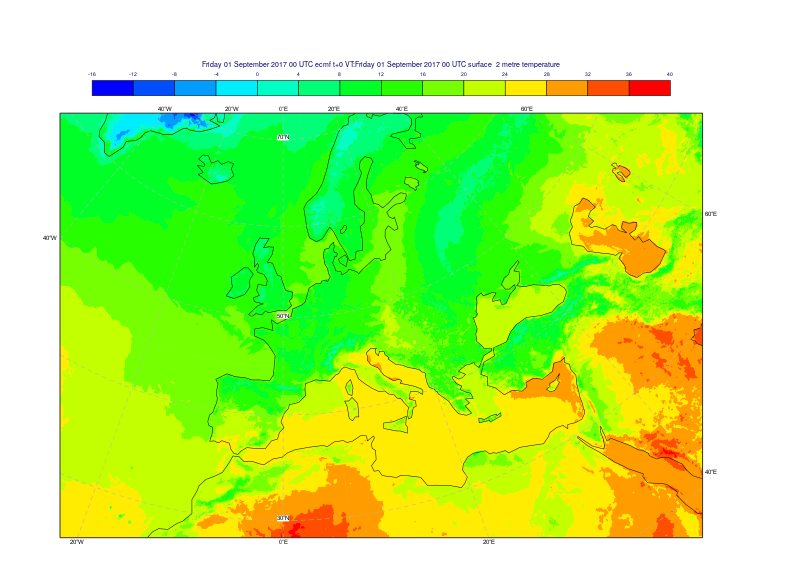...
| Warning | ||
|---|---|---|
The new MARS client with the MIR interpolation library is currently in BETA, and it is meant for tests only. Do not use it for any operational purpose. You can try the new MIR-enabled MARS client with:
You are encouraged to test this new version of the MARS client and report any issues to advisory@ecmwf.int . |
MIR stands for Meteorological Interpolation and Regridding and is a a library of routines for interpolation and regridding of meteorological fields. This new piece of software is replacing the veteran EMOSLIB when it comes to perform those operations in in MARS. Beyond this, MIR’s flexible design facilitates scalability improvements and additional features. These include efficiency gains, a high degree of user configurability, and support for a wider range of grids than in the current package. See the related article in the ECMWF newsletter no.152 for for a more complete description of this new library.
...
| Expand | ||
|---|---|---|
| ||
No, all existing valid MARS requests will also work when using MIR. Some new keywords will be introduced for new features such as:
|
| Expand | ||
|---|---|---|
| ||
You can replace your standard mars calls adding the extra option:
|
| Expand | ||||||
|---|---|---|---|---|---|---|
| ||||||
MIR has undergone a thorough validation process and tests to ensure its quality and correctness. However, since the implementations and strategies used in both packages are different, you may see some differences when using MIR instead of EMOSLIB. How significant those differences will be will depend on each specific case. Here is an example. The same 2m temperature field on a native O1280 grid has been interpolated to a 0.1/0.1 latitude-longitude grid using both methods. Plots have been produced for both, together with a third one with the differences greater than half a degree Celsius between them.
|
Highlights and main differences
...
MIR also computes distance in 3D whereas EMOSLIB computes distances on the 2D lat-lon grid. Consequently, different nearest points may be selected for the interpolation methods, and the nearest neighbour method should improve as a result.
See Distance metrics for for more details.
Parameter classification
...
Support for shifted grids
MIR can work with shifted grids, with no point at latitude=0, longitude=0. An example would be:
This is done automatically provided the differences between N-S and E-W limits are both divisible by the corresponding |
...
increments without remainder. This represents a change in respect to EMOSLIB, which would adjust the area to fit. In the previous example, EMOSLIB would adjust the N/W/S/E boundaries to the more conventional |
...
area 90/0/-90/359. In this example the black points represent the original grid with 1 degree spacing. The red points show the user defined area, which has the same spacing but shifted by half a degree. MARS with EMOSLIB would expand the area to fit in the original grid, as seen in the yellow rectangle. MARS with MIR would honor the user defined area and would return the inner grid shown in green. |
Land-sea mask processing
By default, MIR does not use land-sea mask processing for any parameters. However, users will be able to specify the land-sea mask to use LSM processing for both input and output grids with a new set of MARS keywords.
...
Concept of "RESOL=AV" ("Archived Value") when going to a lower resolution is different. With MIR, RESOL=AV specifies that the transformation is made first to the corresponding octahedral reduced Gaussian grid (i.e., T1279 → O1280 or T639 → O640) followed by grid point interpolation to the user-specified grid.
Default truncation values for "RESOL=AUTO" (Automatic Truncation) have also changed. MIR uses a formula to truncate the spectral series to correspond to the equivalent linear Gaussian grid, replacing the the fixed table used in EMOSLIB. Transformations to regular latitude-longitude grids then use an intermediate full (regular) Gaussian grid.
This diagram illustrates an example transformation going from T1279 to a regular lat-lon 1.0/1.0 grid. Depending on the values of of RESOL and GRID, MIR will follow different paths. As a reference, also the original EMOSLIB behaviour is shown for each case:
| MIR Behaviour | EMOSLIB Behaviour | ||||||||||||||||
|---|---|---|---|---|---|---|---|---|---|---|---|---|---|---|---|---|---|
|
|
| Path | Keywords | MIR Behaviour | EMOSLIB Behaviour |
|---|---|---|---|
| Red | RESOL=AUTO, GRID=1.0/1.0 | Default Behaviour. Transformation from T1279 to an intermediate F90 full (regular) Gaussian grid (with an automatic truncation to T179) followed by a grid-to-grid interpolation from the F90 grid to 1.0/1.0. | Default Behaviour. Direct transformation from T1279 to 1.0/1.0, with an automatic truncation to T213 according to EMOSLIB's truncation table |
| Green | RESOL=AV, GRID=1.0/1.0 | Transformation from T1279 to the corresponding intermediate reduced octahedral Gaussian O1280, before going to 1.0/1.0. | Direct transformation from T1279 to 1.0/1.0, with no truncation. |
| Blue | RESOL=179, GRID=F90, and then GRID=1.0/1.0 | Transformation from T1279 to the F90 full (regular) Gaussian grid (with a user-specified truncation to T179) followed by a grid-to-grid interpolation from the F90 grid to 1.0/1.0. | Same as in MIR, but a separate MARS request is needed for each of the two steps. |
| Note | ||
|---|---|---|
| ||
When doing spectral to grid transformations, MIR may produce smoother fields compared to EMOSLIB. This is due to the fact that MIR uses the intermediate gaussian grid, while EMOSLIB does this transformation directly. |
...



